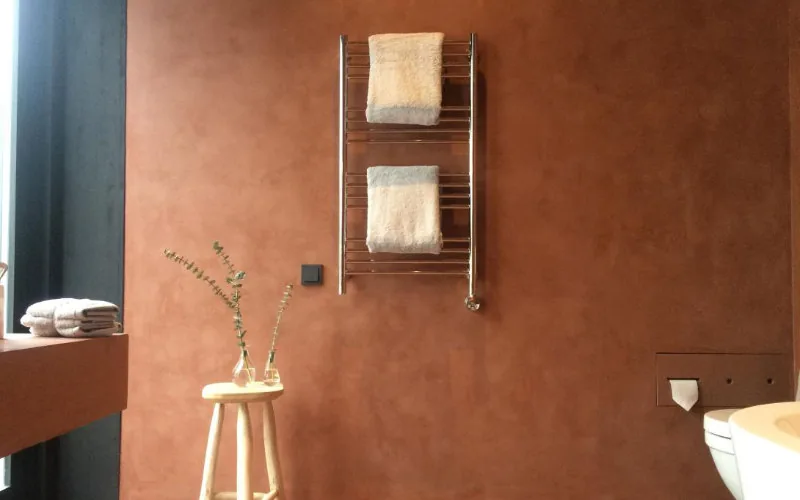Moroccan Tadelakt Plaster Gains Popularity in French Home Decor

Tadelakt is a unique Moroccan lime plaster that meets all decorative desires and is trending in Europe, especially in France.
Originating in the Marrakech region, tadelakt (from the Arabic verb dalaka: to massage, rub, polish, smooth) is a plaster that has always been used in interior decoration. It has indeed been used for centuries in riads, hammams, and palaces. Smooth, soft, waterproof, fungicidal, and shiny, made from lime from the red city, lime water, and black soap, tinted with colored pigments, this plaster is traditionally used to waterproof water cisterns, or in decorative arts and crafts, to coat and waterproof fountains, basins, pools, bowls, sinks, hammams, bathrooms (shower, bathtub, sink...), floors, walls, roofs, and facades of riads, or Moroccan palaces, etc.
What about the manufacturing of tadelakt? Its production is demanding: one must possess skill and be able to mix the ingredients while respecting the proportions. Le Figaro explains that, for a surface of 10m2, the following ingredients must be poured into a clean container: 20 kilos of powdered (or paste) air lime, especially Marrakech lime; 20 liters of 0.06 marble powder; water; 15% to 20% natural pigments to color the tadelakt (adjust to achieve the desired color) and casein (glue) to reinforce adhesion. These ingredients must then be mixed with a mixer attached to the end of a drill until a homogeneous, supple, and creamy paste is obtained, resembling pancake batter.
Next step: this mixture must rest for one to two days before use. Tadelakt is applied in two thin layers (2 to 2.5 mm each), smoothed and then polished with a pebble, a trowel, or a spatula, it is specified. Finally, "when the plaster begins to dry," it must be worked with black soap to make it waterproof.
Above all, you should budget around 15 to 25 € per m² for materials (lime, pigments, glue).
Related Articles
-

Algerian Comedian Sparks Outrage Over Moroccan Rap Video Appearance, Ministry Calls for Artistic Ethics
3 September 2025
-

Dubai Princess Flaunts $1.1 Million Engagement Ring from Rapper French Montana
31 August 2025
-

Algerian Actor Sparks Uproar: Art or Betrayal in Moroccan Rap Video?
31 August 2025
-

Drug Baron’s Lavish Wedding Exposes Morocco’s Celebrity Tax Evasion Scandal
29 August 2025
-

Gad Elmaleh’s Spiritual Journey: From Comedy to Catholic Pilgrimage in Lourdes
29 August 2025